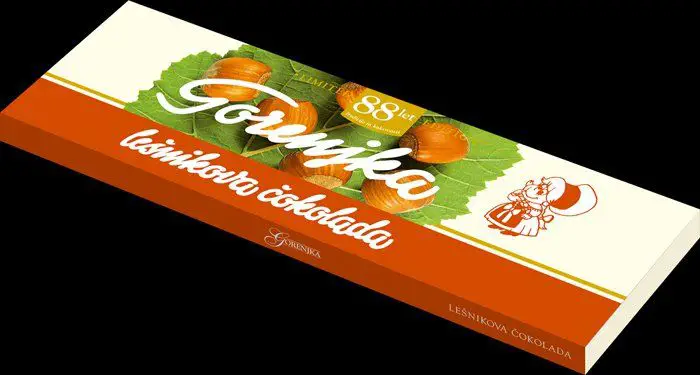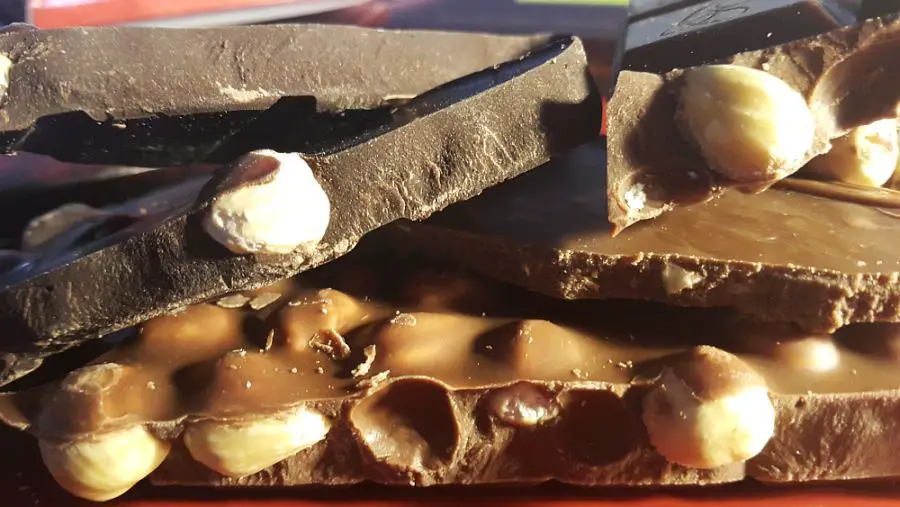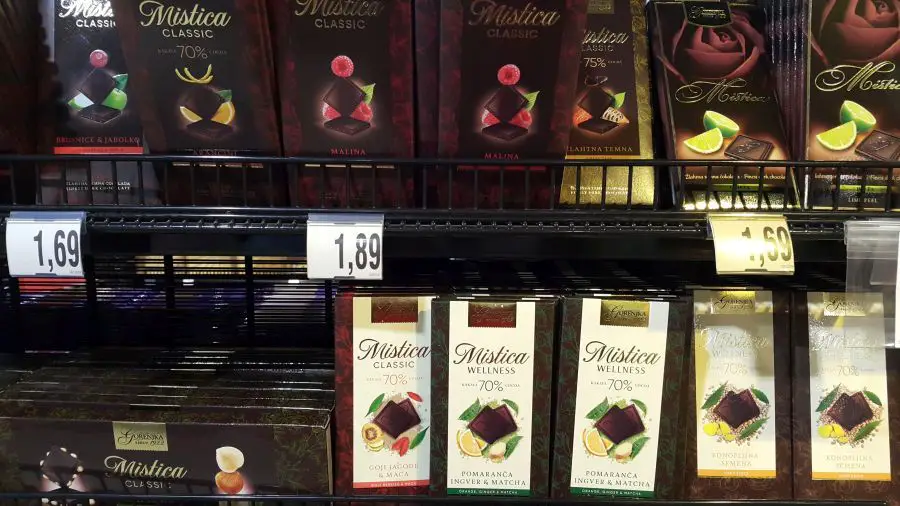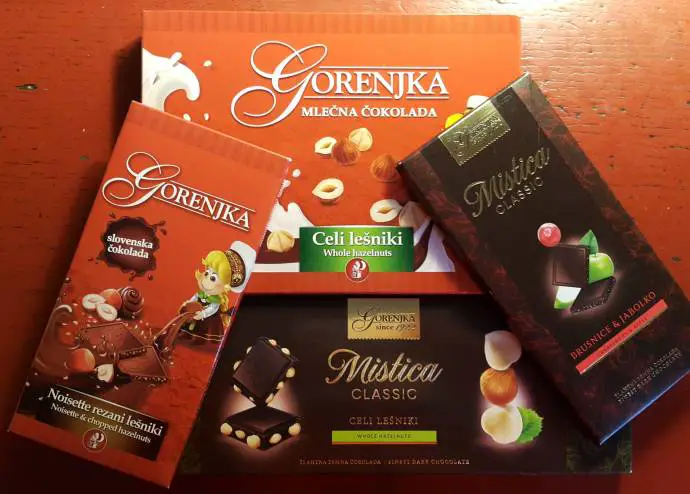January 9, 2018
You have probably spotted the red packaged chocolates, sometimes in unusually large sizes, with a little girl in the picture, and the name of Gorenjka. Gorenjka (a girl from Upper Carniola) is one of the oldest and most successful Slovenian brands, and, we could also argue, one of the sweetest.
The history of chocolate in Slovenia begins in 1881, when an order of Trappist monks (a branch of the ascetic Cistercian order), in search of a place to live after losing their monastery in France, purchased a castle in Rajhenburg (Brestanica in today’s Slovenia), where along with their cheese (Trappist, with a single “p” in Slovenian) they also introduced the chocolate-making industry to the Slovenian lands of the Austrian Empire.
They brought two chocolate-making machines from France and sent one of the Slovenian monks to study in there, and soon the production jumped to industrial levels of 30 to 40 tonnes annually, and in 1912 received honorary quality title Imperial, along with the right to use the lion symbol, from the emperor Franz Joseph.

The Imperial chocolate by Trappists from Rajhenburg (Brestanica)
Six years later imperialism was out and the newly established kingdom (old Yugoslavia) was in, and although the monastery continued with its production, it now had to deal with competition.
In 1922 two more chocolate factories appeared in Slovenia, one in Maribor (the brand Mirim) and another one in Lesce, where Gorenjka’s headquarters are today.
After World War 2, the Lesce factory was nationalised and renamed Gorenjska Chocolate Factory, and in 1958 its current name was finally obtained, Gorenjka.
In the 1980s the Slovenian cartoonist Miki Muster provided the package with a black and white picture of a girl in a traditional Upper Carniola attire, which was later redesigned and put in colour.

The Gorenjka packaging as I remember it from my childhood
Gorenjka now offers a variety of chocolates of various sizes and flavours. Although recently we have seen a tendency towards thinning of the 100g bars, my preference remains with the thicker versions with whole hazelnuts that shoot out when the chocolate snaps in the middle. A high level of thickness is not only important so that full hazelnuts can remain covered in chocolate, but, from my perspective, also because of the texture you feel when you bite into it, and Gorenjka certainly offers a variety here.

Top down: Mistica (dark chocolate) 100g, Milk chocolate with crushed hazelnuts 100g, Mistica (dark chocolate) with whole hazelnuts 250g, Milk chocolate with whole hazelnuts 450g
The main difference between the two big bars with whole hazelnuts is in that one contains more cocoa, while the other contains more hazelnuts. The big milk chocolate with hazelnuts is also significantly thicker. This is how they look after being unwrapped and snapped in half:

Bottom and upper right corner: 450g (same thickness as its 1000g version) whole hazelnuts milk chocolate; in the middle: 100g milk chocolate with ground and chopped hazelnuts; top left corner: Mistica (dark chocolate) with whole hazelnuts
In case you don’t really share this obsession with thick chocolate that I seem to have developed over the years, you might want to try one of the 100g Mistica line of thinner chocolates, made with both new and classic flavours.

Mistica, Gorenjka’s dark chocolate line






